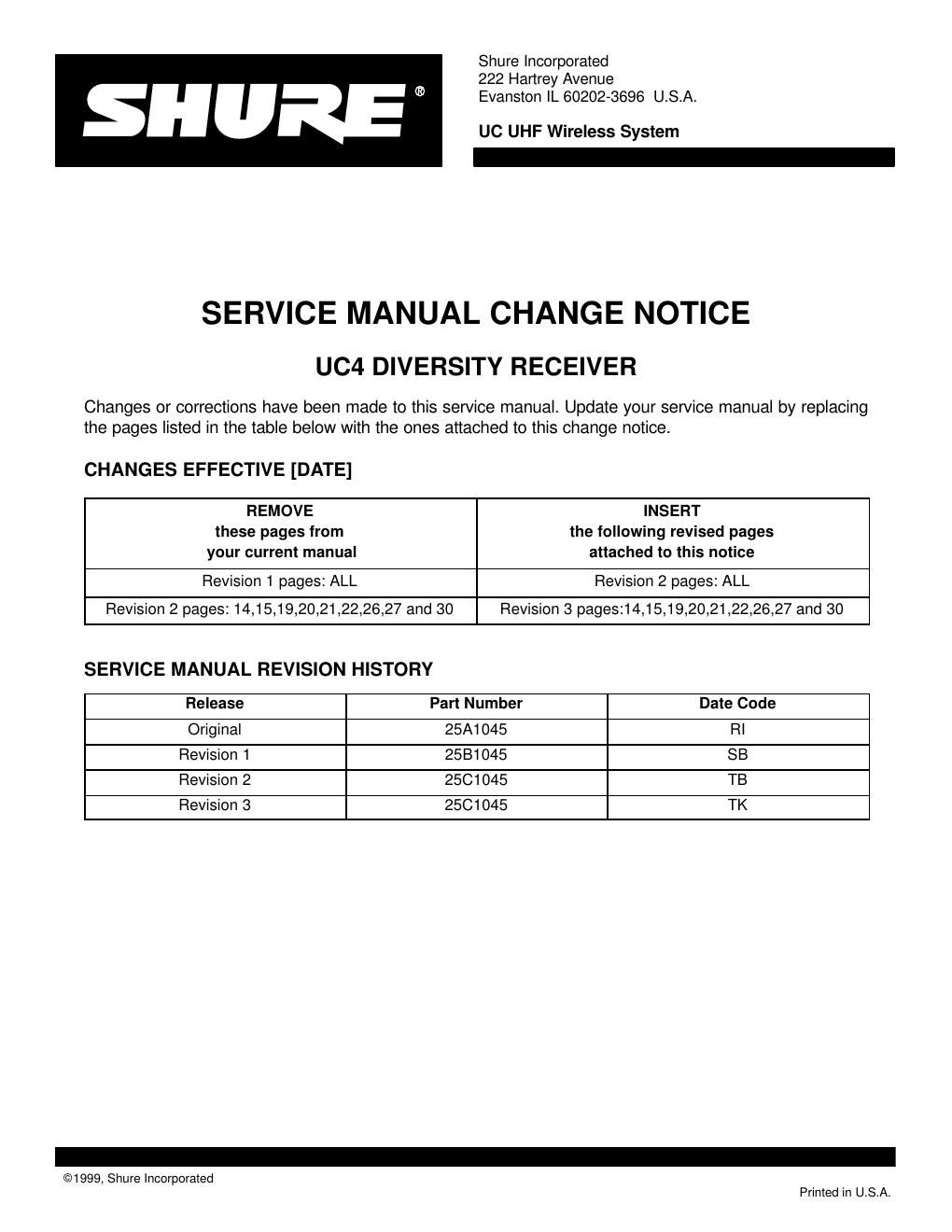Shure uc4 wireless receiver service manual
This is the 33 pages manual for shure uc4 wireless receiver service manual.
Read or download the pdf for free. If you want to contribute, please upload pdfs to audioservicemanuals.wetransfer.com.
Page: 1 / 33
